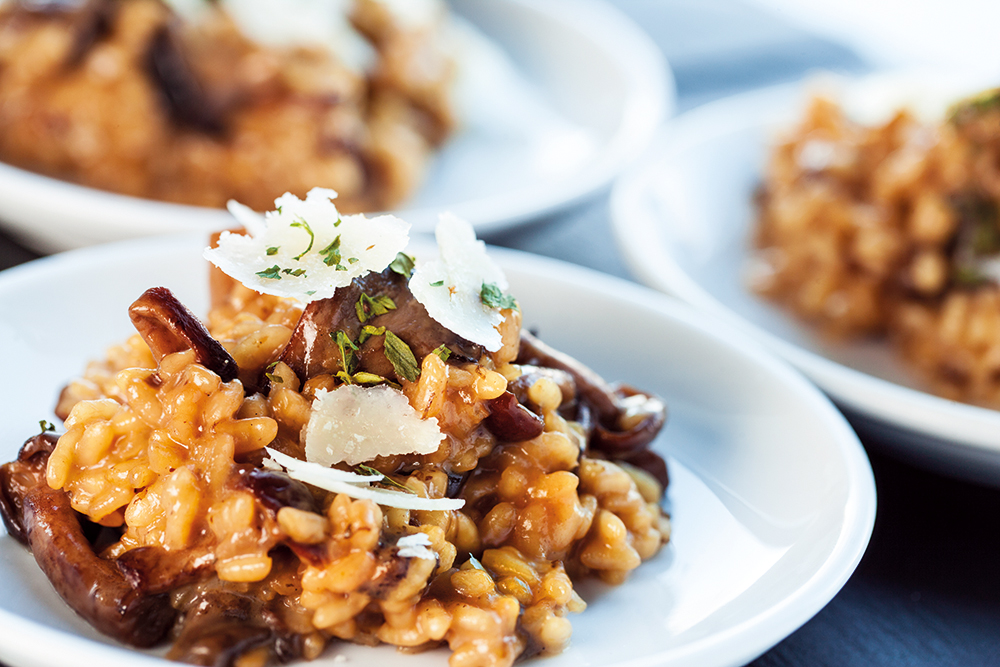Alex Rushmer recalls his first attempt at making risotto. But is this winter classic as simple as it seems?
It took an hour and a half of near constant stirring, but the first risotto I ever made was a reasonable success. Aside from the temporal commitment, of course. I realised my mistake several years (and several thousand risottos) later. It was my first sojourn into the real world – a generously appointed kitchen in a shared house in west London. Fresh out of university and brimming with ideas, a gastronomic curiosity that could not be sated, I made chicken stock and dutifully stored it in the freezer, little cubes of bouillon ready and waiting to be used for ‘enriching a sauce or making a quick noodle soup’ or whatever else the cookbook had said. I went for risotto.
I missed the instruction saying it’s necessary to use stock at a gentle boil when adding to the rice, and instead plopped a large dice of frozen stock into the pan every time it looked a little dry. Thankfully, I’ve learned a few things since then.
My second lesson in making risotto was more pressured and came a few years later in the kitchen at Le Calandre, a restaurant in Padua, Italy. It’s owned by Max Alajmo who, at just 28, became the youngest-ever chef to be awarded three Michelin stars. I was tasked with cooking the restaurant’s signature dish for the chef and his brother, aided only by a quick run-through, some brief words of wisdom (mostly in Italian) and an abstract drawing of a cross-sectioned plant. A young chef de partie was on hand if I got terribly stuck, but mostly it was up to me to recreate what seemed to be the simplest dish on the restaurant’s fifteen-course tasting menu.
Risotto is comforting, warming and wholesome
And that’s the thing with risotto: it is, in essence, very simple, but that also means there is nowhere to hide. A badly made risotto is a slog to eat, mouthful after mouthful of too stodgy, too wet, too crunchy or too dry rice. Seasoning is a tightrope and needs to be done cautiously, often and with a delicate hand. Additions need to be made at precisely the right time in order to ensure adequate doneness of shellfish, vegetables, herbs or meat. Those last couple of ladlefuls of stock need to be dribbled with care and the final flourish of butter and cheese mustn’t negatively affect the cuisson of the rice or the texture and seasoning of the finished dish.
There are so many potential hurdles that anyone thinking of adding a risotto to the menu of a three Michelin-starred restaurant needs to be absolutely confident in both their ability and that of their cooks.
Thankfully, my efforts were deemed worthy. Max and his brother insisted the dish was as good as that which graced their menu. Consequently, I’ve made every risotto in exactly the same way ever since, both at home and at the restaurant, where it often finds its way onto the menu, especially at this time of year when we yearn for food that is comforting, warming and wholesome.
Ever mindful of the increasing trend towards veganism (at Vanderlyle we serve around a dozen vegan diners a month), we’ve even developed a completely dairy-free version that eschews the traditional cheese and butter for ingredients that are entirely plant-based and result in a dish that is virtually indistinguishable from the traditional recipe, although whether it would pass muster in Italy remains to be seen.
Alex’s recipe for risotto Milanese

